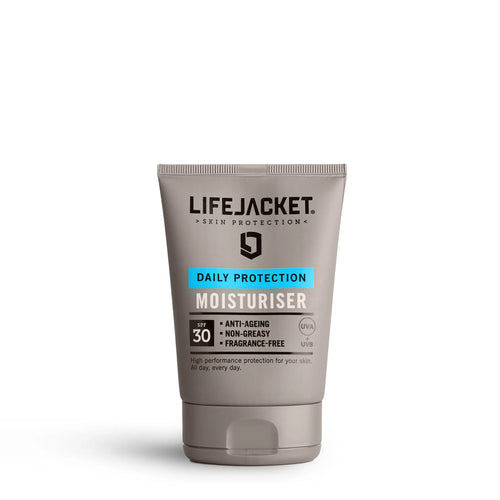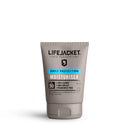Why is vitamin D important?
It's well established that vitamin D is essential for a number of bodily and brain functions, above all bone health. That's because vitamin D helps the body absorb calcium and phosphate minerals from our diet which, in turn, is important for ensuring healthy bones, teeth and muscles.
But, it has also been suggested that vitamin D may help prevent serious diseases such as cancer, various forms of arthritis and autoimmune diseases as well as contributing to better mood, mental health and libido.
Medical research is constantly evolving to fully understand the link between vitamin D and disease prevention but it seems that a lack of this essential vitamin can cause health issues.
So, in today's LifeJournal we explain some of the main facts surrounding vitamin D and how you can ensure you get enough, particularly during autumn and winter months.
A quick explainer on vitamin D2 and D3
For the purpose of this post, we refer to vitamin D holistically to mean vitamin D2 or D3 but because you may have seen both, it's worth briefly describing the two types:
-
Vitamin D3 is the form of vitamin D the human body makes when sunlight strikes the skin. The body can’t manufacture vitamin D2. It's found in animal sources of foods.
-
Vitamin D2 primarily comes from plant sources (like wild mushrooms), and forms when certain kinds of plants are exposed to ultraviolet light from the sun.
Vitamin D3 is more efficiently absorbed and synthesised by the body and it has a longer half-life (how long it stays in your system). That makes D3 the optimal source when taking vitamin D supplements to boost vitamin D levels.
How do you get vitamin D without supplements?
There are two natural sources: diet and sunlight.
Sunlight with sufficient amounts of UVB light helps the body to produce or ‘synthesise’ vitamin D in the skin. UVB light converts D2 to vitamin D3. Heat is also required for this reaction to take place but body heat is sufficient.
In the Northern hemisphere, sunlight has insufficient UVB between October to early March for our skin to be able to make vitamin D. And so, during these months, we may need to 'intake' vitamin D to avoid a deficiency.
The other natural source of vitamin D: diet
Some foods contain vitamin D but nothing quite like a hit of sun - the dosages in foods are quite small.
Vitamin D is a fat soluble molecule so it's found in fatty foods like oily fish (salmon, herring, mackerel), fortified daily products, meat, eggs and mushrooms.
In the UK, an organisation called the Scientific Advisory Council on Nutrition advises the British government on matters like recommended daily amounts. Relatively recently, they re-assessed the guidance on the recommended daily dose for people over the age of four. The Council believes there's just about enough evidence to suggest we're better off having a base level of vitamin D flowing around our blood stream and to achieve this, we need to consume 10 micrograms per day to achieve that base level. As an example, that’s five eggs per day. Or one salmon fillet per day. Many supplement brands express micrograms in UI ("international units"). 10μg is equivalent to 400 IU.
During late spring and summer, incidental exposure to sunlight typically generates adequate vitamin D levels without needing to consume extra through food or supplements.
Ultimately, it doesn't matter where you get your vitamin D from so long as you have enough in your system at all times. It's all the same molecule.
Something to consider when it comes to sunlight...
The synthesis of vitamin D in the skin when exposed to sunlight depends on multiple factors like your personal skin type, how much adipose tissue you have, where you are, the time of day, weather conditions and so on.
Because vitamin D is a fat soluble molecule it can become 'trapped' in body fat making it unavailable to the body. The more adipose tissue a person has, the more vitamin D gets stuck within the fat cells. That makes obesity a risk factor for low vitamin D levels.
Another important factor is skin colour. The darker a person's skin, the more melanin they have. Melanin is our body's natural defence against UV. So, people with darker and black skin have less conversion taking place and may experience low vitamin D levels.
The general rule of thumb from medics and researchers is 10-15 minutes per day of sunlight (between March and September) is more than adequate to give you the recommended dose of vitamin D.
Not wishing to put a dampener on things but sunlight is a proven cause of skin cancer. Most melanomas are linked to excessive UV exposure, and the same UVB rays that trigger vitamin D production can also cause sunburn. Even a few serious burns over your lifetime can raise your risk of melanoma, so sensible, non-burning exposure is the goal.
For lighter skin types, 10–15 minutes of midday sunlight in spring or summer is usually enough for vitamin D without significant risk. If you’re outside for longer, or if your skin starts to redden, that’s the time to apply SPF.
But doesn't sunscreen impair vitamin D synthesis?
Until recently, there were concerns within the health community that sunscreen may be contributing to vitamin D deficiency. The logic being that sunscreen could be blocking the UVB light that causes vitamin D synthesis in the skin.
This long-held hypothesis has been largely disproven by new evidence. Three separate studies by experts from London and Australia, published in the British Journal of Dermatology in May 2019, showed that while sunscreen can slightly reduce vitamin D production, it doesn’t prevent it.
The leader of one of the studies was Professor Antony Young from Kings College London. In response to the study, he confirmed that 'Sunlight is the main source of vitamin D.
'Sunscreens can prevent sunburn and skin cancer, but there has been a lot of uncertainty about the effects of sunscreens on Vitamin D.
'Our study, during a week of perfect weather in Tenerife, showed that sunscreens, even when used optimally to prevent sunburn, allowed excellent vitamin D synthesis.'
The Professor and his team measured vitamin D levels in people's blood both before and after sun exposure in Tenerife. They had a control group who had very limited sun exposure (in Poland). Different sunscreen products were applied, in different quantities, to the Tenerife group. Despite the application of sunscreen, there was a 'highly significant' improvement in vitamin D levels after sun exposure in this group.
Holly Barber from the British Association of Dermatologists said that 'The risk of vitamin D deficiency from sunscreen has been found to be low, and therefore is unlikely to outweigh the benefits of sunscreen for skin cancer prevention.'
Get outside (but protect yourself!)
Vitamin D deficiency is often used as a reason to skip sunscreen, but the science shows that’s unnecessary. Sunscreen might slightly reduce vitamin D production, but it doesn’t stop it. You can protect your skin and still make plenty of vitamin D from regular, non-burning daylight. And during autumn and winter, when UVB levels drop, a good vitamin D3 supplement will keep you topped up.






